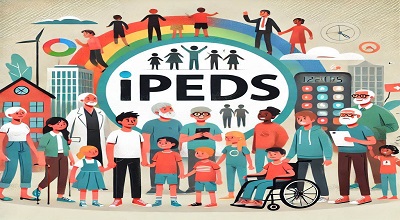Age Ranges for IPEDS
Age Ranges for IPEDS: IPEDS stands for Integrated Postsecondary Education Data System. Which is a system of interrelated surveys conducted annually by the U.S. Department of Education’s National Center for Education Statistics (NCES). IPEDS collects data from all primary providers of postsecondary education in the United States in areas. Such as enrollments, program completions, graduation rates, faculty, staff, finances, and institutional prices.
One of the surveys that IPEDS conducts is the Completions survey. Which collects data on the number and type of awards conferred by postsecondary institutions in various fields of study. The Completions survey also collects data on the age of the completers at the time of receiving the award. The IPEDS age ranges for completers are as follows:
- Under 18
- 18-24
- 25-39
- 40 and above
- Age unknown
These age ranges are based on the student’s dates of birth and are used to have consistent data from all institutions.
How can I access data from IPEDS?
There are several ways to access data from IPEDS, depending on your needs and preferences. Some of the options are:
- IPEDS Data Collection System: This is the official website where institutions can submit their data to IPEDS. You can also use this website to download data files. Import data files, and view data feedback reports.
- IPEDS Use the Data: This is the website where you can access and analyze IPEDS data online. You can use various tools such as Data Center, Trend Generator, and Custom Tables. And Peer Analysis System to explore and compare IPEDS data.
- IPEDS APIs: These are application program interfaces that allow you to access IPEDS data programmatically. You can use APIs to retrieve data for specific institutions, variables, years, or surveys. You can also use APIs to create custom data sets and visualizations.
- IPEDS Data Summary Reports: These are PDF documents that provide summary statistics and charts for selected IPEDS variables and surveys. You can access these reports by looking up an institution on the IPEDS website. And clicking on the Data Summary Reports tab.
What is the Data Center?
The Data Center is a website where you can access and analyze IPEDS data online. You can use various tools such as Data Center, Trend Generator, and Custom Tables. And Peer Analysis System to explore and compare IPEDS data. The Data Center allows you to select institutions, variables, years, and surveys to create your own custom data sets and visualizations.
You can also download data files, view data feedback reports, and access IPEDS APIs from the data center. The Data Center is a useful resource for researchers, educators, policymakers, and students who are interested in postsecondary education data in the United States.
